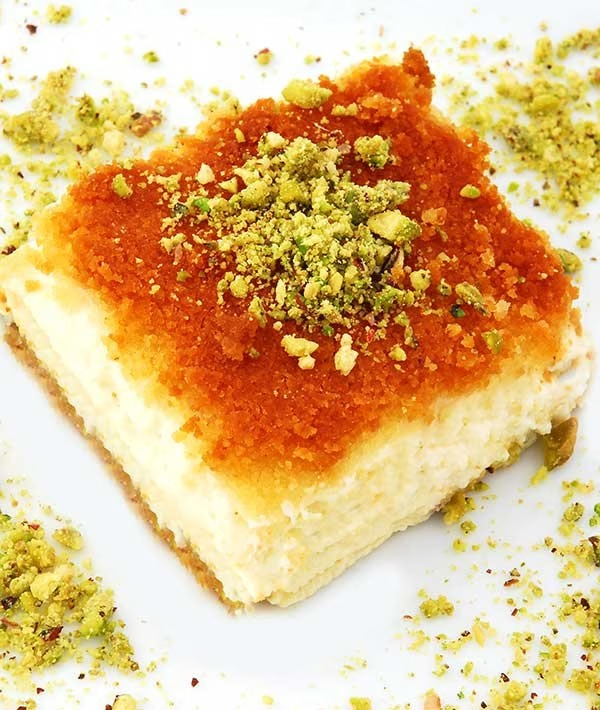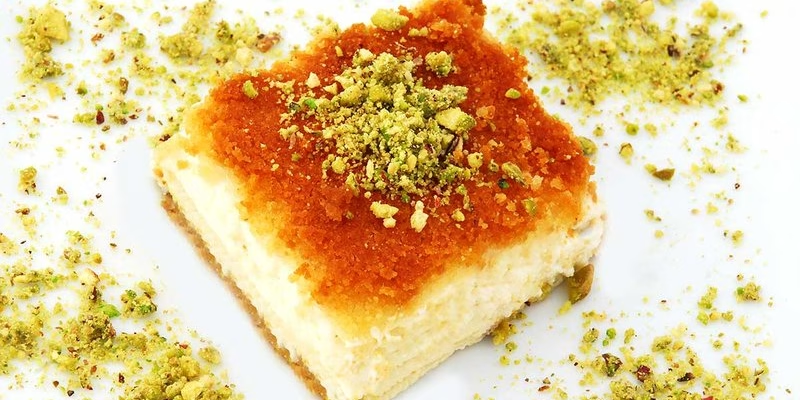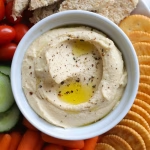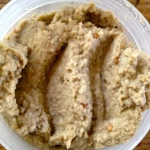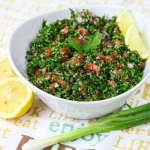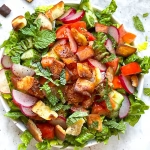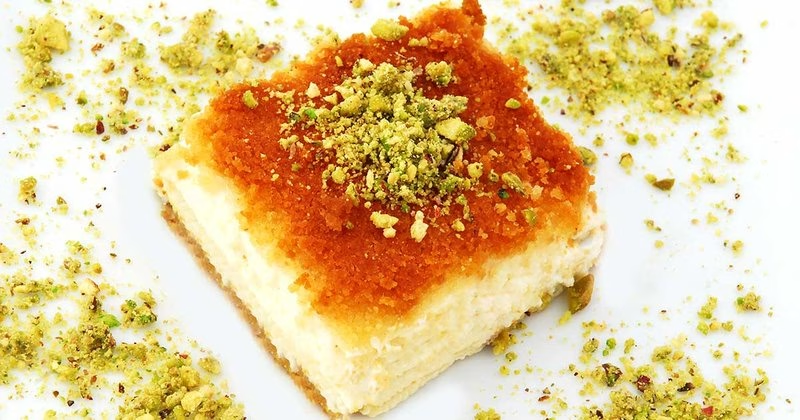
Introduction
If you’ve never tasted **Maamoul Bi Ashta**, you’re in for a sweet treat! This traditional Middle Eastern pastry is often enjoyed during festive occasions and gatherings. Stuffed with rich, creamy ashta (Arabic clotted cream), Maamoul Bi Ashta stands out for its unique flavors and melt-in-your-mouth texture. The dough is typically made from wheat flour, and when baked, it gives off an irresistible aroma that fills your kitchen with warmth and joy.
Originating from the Levant region, this delightful dessert has many variations that showcase local customs and ingredients. The fusion of sweet and nutty flavors with a hint of orange blossom water makes each bite a delightful experience. In this article, you’ll learn not only how to make Maamoul Bi Ashta at home but also discover tips to perfect this dish. Let’s dive into the world of Maamoul Bi Ashta ingredients, variations, and the best recipe to impress your loved ones!
Ingredients
Here’s everything you’ll need to make delicious **Maamoul Bi Ashta**:
| Ingredient | Measurement | Description |
|---|---|---|
| All-purpose flour | 3 cups | Essential for creating a tender dough that crumbles just right. |
| Unsalted butter | 1 cup (melted) | Brings richness and flavor, essential for a classic Maamoul Bi Ashta. |
| Powdered sugar | 1 cup | To sweeten the dough and create that classic powdered sugar topping. |
| Milk | 1/2 cup | Adds moisture and helps bind the ingredients together. |
| Baking powder | 1 tsp | To give the pastries a slight lift during baking. |
| Orange blossom water | 1 tbsp | A fragrant addition that enhances the pastry’s flavor. |
| Ashta (clotted cream) | 2 cups | The star of the show! Creamy goodness that makes Maamoul Bi Ashta irresistible. |
| Chopped pistachios | 1/4 cup | For garnish, adding a nutty flavor and beautiful color. |
Step-by-Step Instructions
**Step 1: Prepare the Dough**
Start by combining the **all-purpose flour** and **baking powder** in a large bowl. In a separate bowl, mix the **melted unsalted butter** with **powdered sugar** until smooth. This is where the magic begins! Slowly add the butter mixture to the flour while gradually incorporating the **milk** and a splash of **orange blossom water**. Knead this beautiful dough gently until it’s soft yet slightly sticky. Cover it and let it rest for about 30 minutes.
**Step 2: Make the Ashta Filling**
You can easily prepare the **ashta** at home using heavy cream or you can find it in Middle Eastern grocery stores. If you’re making it from scratch, simmer some fresh milk with cornstarch and sugar until it thickens, then flavor it with a few drops of **orange blossom water**. Once it cools down, it’s perfect for stuffing our Maamoul!
**Step 3: Shape the Pastries**
Preheat your oven to 350°F (175°C). Take the rested dough and divide it into small balls, about the size of a walnut. Flatten each ball with your fingers and place a spoonful of **ashta** in the center. Carefully fold the dough over the filling and pinch it closed, shaping it into little balls again. For traditional shapes, you can use a Maamoul mold to press these into intricate designs.
**Step 4: Bake and Garnish**
Place your formed pastries on a baking sheet lined with parchment paper. Bake for about 20 to 25 minutes, or until lightly golden on the bottom. Once out of the oven, let them cool slightly. Dust them generously with **powdered sugar** and sprinkle the tops with **chopped pistachios** for a festive touch.
**Step 5: Serve and Enjoy**
Your homemade **Maamoul Bi Ashta** is ready to serve! These pastries are best enjoyed warm or at room temperature, and they make an excellent addition to any dessert table. Pair with a cup of Arabic coffee or tea for that authentic experience.
Pro Tips
– **Chill the Dough**: If the dough feels too sticky, refrigerate it for 15 minutes to make it easier to handle.
– **Don’t Overfill**: Less is more! Avoid overfilling the pastries to prevent them from bursting during baking.
– **Experiment with Flavors**: While **orange blossom water** is traditional, you could also try rose water for a different aromatic twist.
– **Decorate Creatively**: Get creative with the garnish! You can use shredded coconut or other nuts for variety.
– **Store properly**: Keep any leftovers in an airtight container at room temperature for up to a week.
Nutritional Information
Here’s a quick breakdown of the nutritional information per serving of **Maamoul Bi Ashta** (approximately 1 pastry):
| Nutrient | Amount |
|---|---|
| Calories | 210 |
| Protein | 3g |
| Carbohydrates | 26g |
| Saturated Fats | 6g |
| Fiber | 1g |
| Cholesterol | 15mg |
| Sugars | 10g |
| Fat | 10g |
FAQs
**What is the best way to store Maamoul Bi Ashta?**
Store your pastries in an airtight container at room temperature. They can last for up to a week.
**Can Maamoul Bi Ashta be made vegan or gluten-free?**
Absolutely! Substitute regular butter with vegan butter and use gluten-free flour to make a gluten-free version.
**What are the best side dishes to serve with Maamoul Bi Ashta?**
These pastries pair wonderfully with Arabic coffee or mint tea, offering a perfect balance between sweet and bitter flavors.
**How long does it take to prepare Maamoul Bi Ashta?**
Preparation takes around 30 minutes, plus an additional 30 minutes of resting time, and baking takes about 25 minutes.
**Can I freeze Maamoul Bi Ashta for later?**
Yes! You can freeze baked pastries for up to 2 months. Just make sure to wrap them tightly to preserve freshness.
**Is Maamoul Bi Ashta served during special occasions?**
Yes, these pastries are often enjoyed during holidays like Eid and other celebrations in Middle Eastern cultures.
**Can I add nuts to the Ashta filling?**
Certainly! Mix in some finely chopped nuts, like pistachios or walnuts, to give the filling an extra crunch.
**How do I know when the pastries are done baking?**
Keep an eye on them! They should be lightly golden on the bottom but still soft to the touch when you take them out of the oven.
Don’t forget to grab a plate and savor the delightful taste of your homemade **Maamoul Bi Ashta**!
